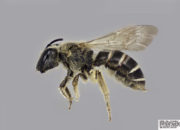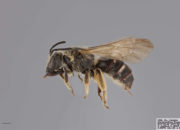Furrow bees are common, widespread, and often confusing. Even though only 4 species are found in Vermont, they can easily be confused with several other genera.
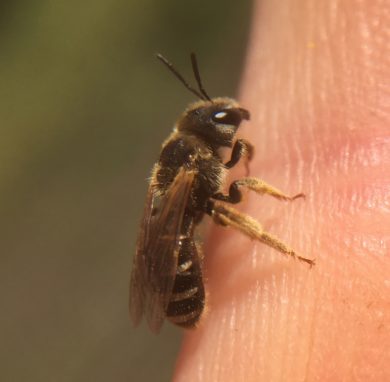
A female Ligated Furrow Bee looking for sweat. Note the sharp point behind the eye.
In most cases Furrow Bees are social, ground-nesting species with a hierarchical structure like Bumble Bees. As members of the Sweat Bee family (Halictidae), they are occasionally attracted to human sweat, and will walk around calmly on fingers and arms. The Ligated Furrow Bee in particular can be dominate in human modified landscapes mid-summer – luckily they are relatively easy to identify and learn.
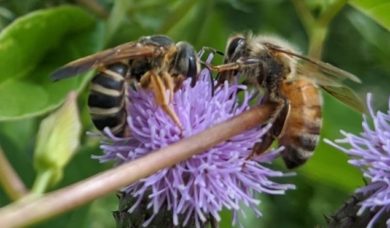
The Parallel-striped Sweat Bee (left) is the largest in the genus, rivaling the size of a honey bee (right).
Genus level ID
From a field-ID perspective, there are bigger differences between Furrow Bee species than there are between Furrow Bees and other bee genera. The four Furrow Bees in Vermont range from small and shiny (like Lasioglossum) to large and hairy (like Andrena). Luckily, with practice all four are identifiable from photos. One distinctive feature of the genus is the hair bands on the abdomen are on both sides of the gaps between the segments – see the two images below. Males are trickier than females, but can usually be separated by a combination of the color of the antenna and the front femur.
Species Accounts
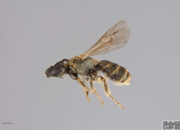
Confusing Furrow Bee Female
Halictus confusus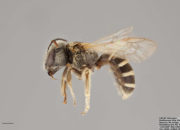
Ligated Furrow Bee Female
Halictus ligatus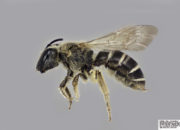
Orange-legged Furrow Bee Female
Halictus rubicundus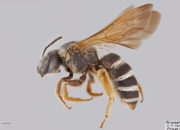
Parallel-striped Sweat Bee Female
Halictus parallelus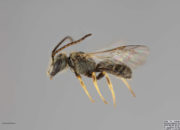
Confusing Furrow Bee Male
Halictus confusus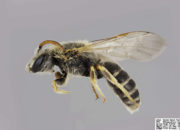
Ligated Furrow Bee Male
Halictus ligatus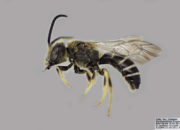
Orange-legged Furrow Bee Male
Halictus rubicundus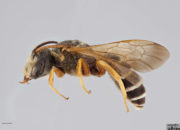
Parallel-striped Sweat Bee Male
Halictus parallelusUnless otherwise specified, photos are courtesy of Margarita Miklasevskaja at PCYU with funding from NSERC-CANPOLIN.
Ligated Furrow Bee (Halictus ligatus) – Abundant. Size somewhat variable, but smaller than a Honey Bee. Females have an enlarged cheek with a distinctive point on the bottom corner. Generally appears big-headed. Males have bi-colored antenna and dark front femurs
Confusing Furrow Bee (Halictus confusus) – Small and shiny, this species is often confused with Metallic Sweat Bees (subgenus Dialictus), but like all Furrow Bees, they have the double hair bands on the abdomen. Males have bi-colored antenna and orangish front femurs.
Orange-legged Furrow Bee (Halictus rubicundus) – Generally larger than the preceding two species this species is most likely to be confused with the larger Lasioglossum (subgenus Lasioglossum). Males have dark antenna and dark front femurs.
Parallel-striped Sweat Bee (Halictus parallelus) – Distinctive and rare. This big, beautiful bee is only known from a few diverse meadows.
Please note that many of our datasets have not been published yet, so the maps are incomplete.
